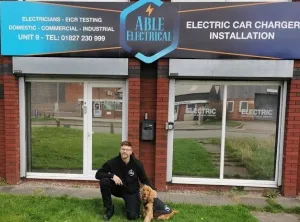You can be broken down into three different categories:
Emergency escape lighting: When people need to leave a building in an emergency and the power has gone out, such as in the event of fire, emergency lighting covers all escape routes. The aim is safely guiding people to their nearest exit via lit escape routes.
Emergency safety lighting: This applies when power has failed, but it’s not an emergency situation. Emergency safety lighting is enough for people to remain in areas of a building while power is restored, but it’s not enough to carry on working.
Standby lighting: This is back-up lighting that is activated during a power cut to a level that allows work to continue. This has to be 100% of the normal lighting.
For safety reasons most commercial properties, including workplaces, retail, leisure and public buildings (and some domestic properties) need some form of emergency lighting and there are different requirements relating to different categories of building.
Risk assessments are usually necessary to determine what level of emergency lighting system is needed.
Rules and regulations around emergency lighting have toughened up in recent years and the legal obligations for installing emergency lighting systems now carry the same importance as fire alarm systems.
Relative legislation includes the Regulatory Reform (Fire Safety Order), the Health and Safety at Work Act, Building Regulations and the EU Workplace Directive.
Emergency lighting regulation is covered by a variety of British Standards at each stage of the process, including general advice about the provision of emergency lighting (BS 5266-1:2016), the specified illumination (BS EN 1838: 2013), minimum requirements for the provision and testing of emergency lighting for different premises and various product standards (BE EN 50172:2004/BS 5265:2004).
All emergency lighting needs to be regularly tested by qualified electricians in accordance with safety standards. This is to ensure it is working correctly, compatible with fire safety systems and continues to meet regulations – for example, if you’ve redesigned or refurbished your premises, the chances are your emergency lighting systems will need to be altered accordingly.
Various tests are required daily, monthly and annually, including checks of individual luminaires and exit signs and of central battery systems.
Get in touch now for more information on emergency lighting, or to request a quote for emergency lighting testing your business.





